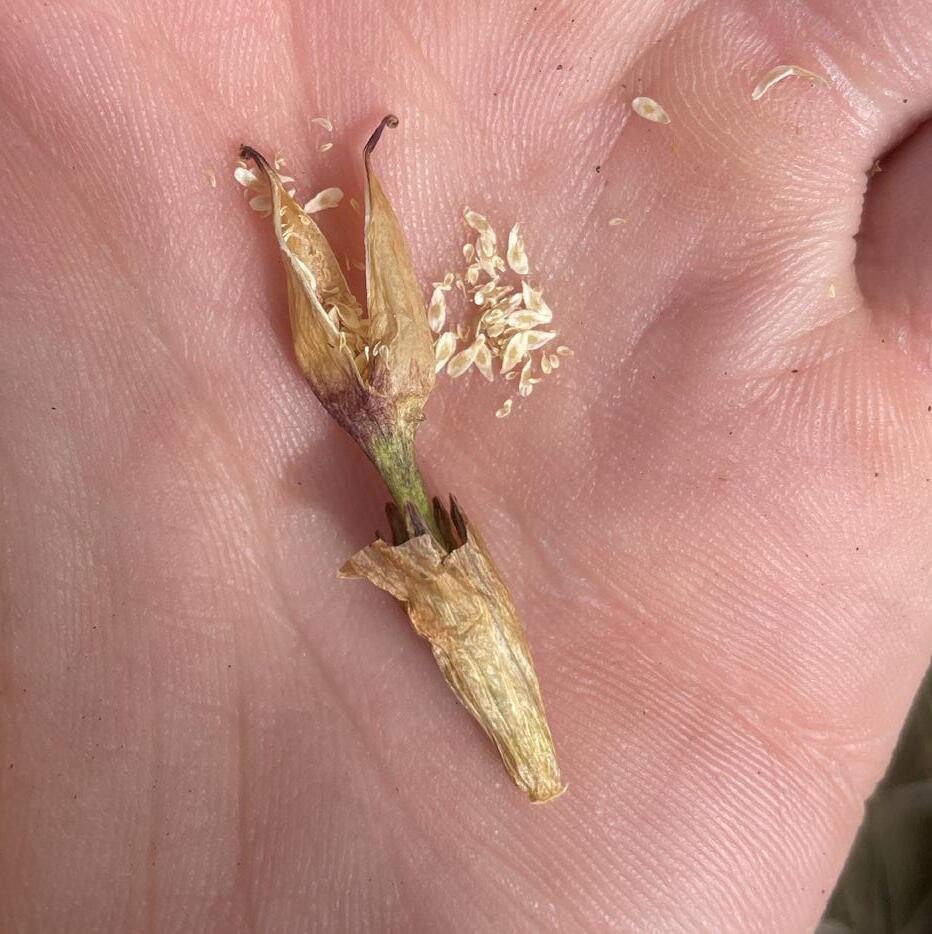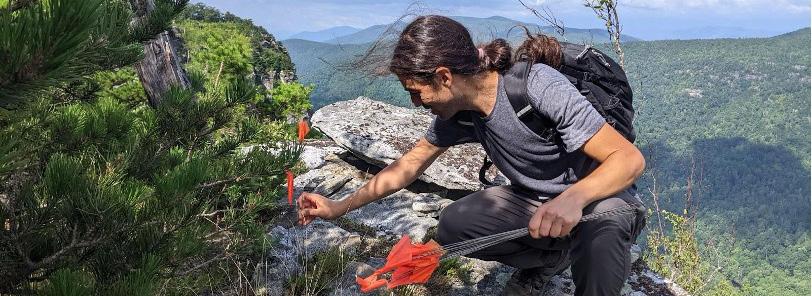giving in action


“Nature is not a place to visit. It is home.”
– Gary Snyder



“Nature is not a place to visit. It is home.”
– Gary Snyder
Did you know that an alligator snapping turtle (Macrochelys temminckii) calls our Tropical Rotunda home? Without the informative sign near the waterfall pond alerting you to the presence of Carmine, the Garden’s resident representative of North America’s largest freshwater turtle species, it might be easy to overlook this captivating creature. Interpretive signage just like this is thoughtfully placed throughout the Garden, and plays a pivotal role in enriching visitors’ experiences by transforming a simple stroll among the plants into an engaging educational journey.
Each season, the Garden’s Interpretive Specialist collaborates with senior horticulture staff to identify plants, animals, and horticultural concepts that merit special attention. The team chooses to highlight content that connects to current seasonal displays and resonates with the Garden’s ever-evolving landscape. The Interpretive Specialist then meticulously crafts each sign, blending art, information, and realistic illustrations to help visitors identify and appreciate fascinating horticultural or ecological insights.
Examples of recent ephemeral signs include animal-plant relationships with migrating birds and berries, shade-loving colorful blooms in Storza Woods, and the conservation of biocontrols with aphid-eating ladybugs. In addition to enhancing the visual appeal of the Garden, signage fosters a deeper appreciation of the natural world. Where else could you learn about such a wide spectrum of diverse flora and fauna? Here at the Garden, your gifts support the important work of our Education team as we point visitors toward must-see moments, such as Carmine’s underwater home in the Tropical Rotunda, while highlighting intricate details of various plants throughout the seasons.

Nature is home—not only for thriving populations of native species iconic to the landscapes we love but also for small occurrences of rare and endemic species that warrant research and protection for future generations. By extension, nature is home to our conservation scientists as they travel to remote locations to study these populations, collecting habitat and census data to determine population abundance, density, reproduction rates, and size. Your gifts support this work, and are multiplied when paired with philanthropic and federal grants. Together, these funds send our Conservation & Research teams across the southeastern United States, Central and South America, and into the Caribbean to locate, study, and conserve irreplaceable plant biodiversity. Data collected during research is shared with federal, state, and non-profit partners and informs recommendations to those who manage protected lands where these species often occur, greatly contributing to our collective understanding of why certain species or populations are thriving or threatened.
This scientific exploration is crucial to the Garden’s mission as we work to protect rare and endangered plants. Our dynamic Conservation and Research team includes 5 Ph.D. researchers and 33 conservation scientists who collaborate closely with each other and with partner organizations to develop innovative strategies to protect imperiled plants, working in conservation laboratories, greenhouses, and nurseries, and in fragile ecosystems across the region.




“Carmine”, the Garden’s resident Alligator Snapping Turtle



In the lobby of the Dorothy Chapman Fuqua Conservatory, the Garden’s frog collection has long delighted guests of all ages. Our decades-old amphibian exhibits were retired recently and replaced with four gleaming display cases that showcase unique ecosystems from areas of the world that are focal points for our indoor plant collections. The new custom-built tanks offer opportunities for close inspection of harlequin poison frogs from Colombia, fringed leaf frogs and tiger-striped tree frogs from Ecuador, evergreen toads and crowned tree frogs from Panama, and golden mantellas and plated leaf chameleons from Madagascar.


These captivating creatures can be found in and among carefully curated plant material that reflects the rich diversity of their native habitats. For example, the Madagascar display includes flood-plain plants such as Dypsis minuta, the world’s smallest palm tree, which rarely exceeds 20 inches in height, and Amorphophallus ankarana, a diminutive relative of the powerfully odiferous “corpse flower.” The Colombian tank highlights a variety of Philodendron, bromeliads, and other plants that are indigenous to the rainforest floor, and the adjacent exhibit spotlights specimens from the Ecuadorian cloud forest canopy like Lepanthes calodictyon, a striking miniature epiphytic orchid. The largest of the four tanks celebrates the Garden’s long history of working with scientists in Panama to ensure the survival of imperiled frog species. In this panoramic display are seven species of Anthurium, which are notoriously challenging to grow as houseplants because they require very high humidity and ample air circulation to thrive.
Unrestricted support was instrumental in funding the installation of the new frog tanks while also ensuring the ongoing excellence of these specialized displays. Thanks to your generosity, our Horticulture Team and Amphibian Specialists are able to create and maintain ideal environments for our frogs in residence as we continue to educate the public about the remarkable ecosystems they call home.

